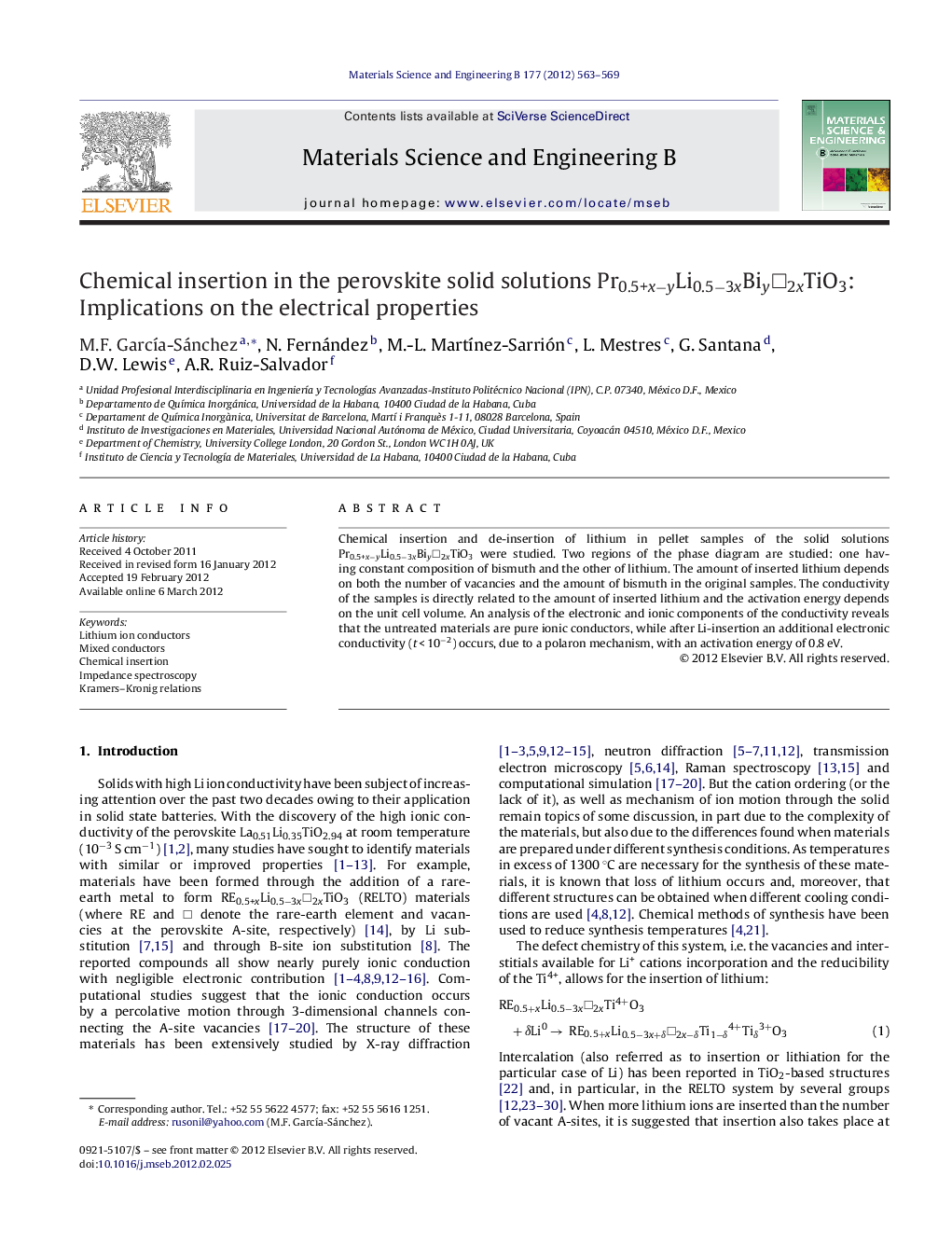| Article ID | Journal | Published Year | Pages | File Type |
|---|---|---|---|---|
| 1529325 | Materials Science and Engineering: B | 2012 | 7 Pages |
Chemical insertion and de-insertion of lithium in pellet samples of the solid solutions Pr0.5+x−yLi0.5−3xBiy□2xTiO3 were studied. Two regions of the phase diagram are studied: one having constant composition of bismuth and the other of lithium. The amount of inserted lithium depends on both the number of vacancies and the amount of bismuth in the original samples. The conductivity of the samples is directly related to the amount of inserted lithium and the activation energy depends on the unit cell volume. An analysis of the electronic and ionic components of the conductivity reveals that the untreated materials are pure ionic conductors, while after Li-insertion an additional electronic conductivity (t < 10−2) occurs, due to a polaron mechanism, with an activation energy of 0.8 eV.
Graphical abstractFigure optionsDownload full-size imageDownload as PowerPoint slideHighlight► Lithium insertion is related to the number of vacancies and bismuth concentration. ► The use of Kramers–Kronig relations allows the separation of the electronic conductivities. ► The insertion changes the samples from ionic conductors to mixed conductors. ► Electronic conduction is via a polaron mechanism with activation energy of ∼0.8 eV.
